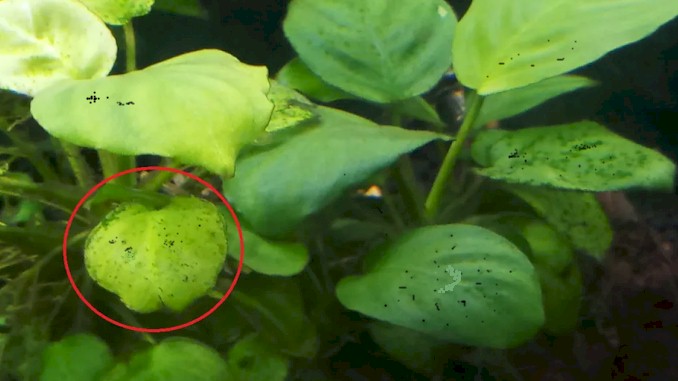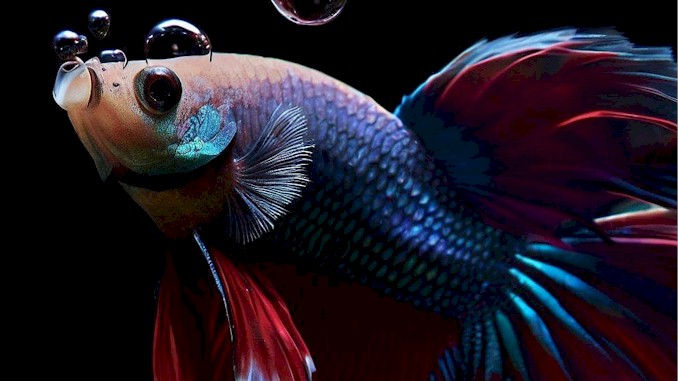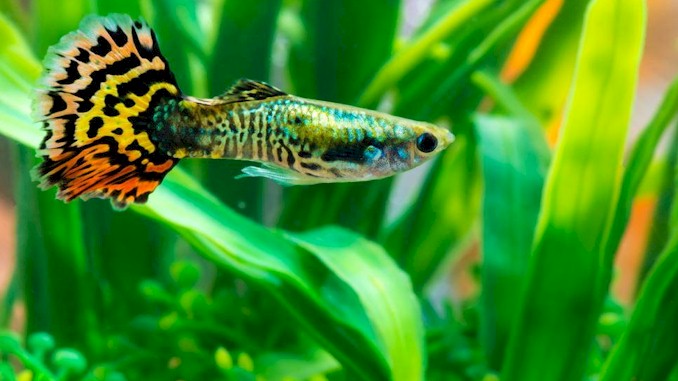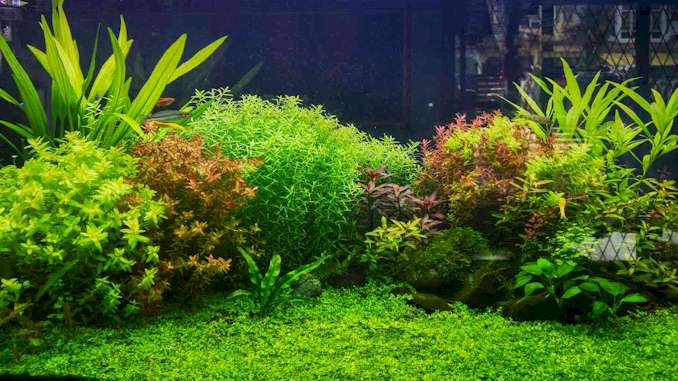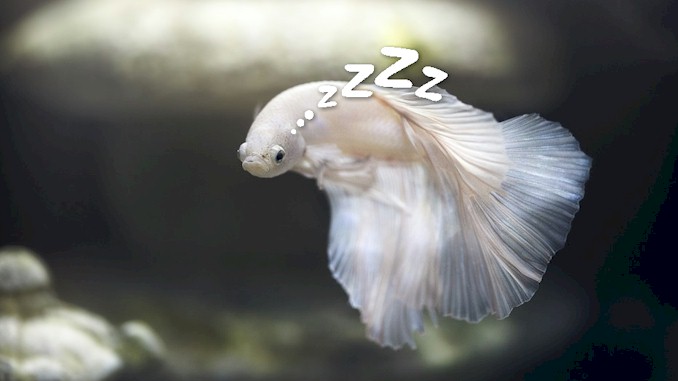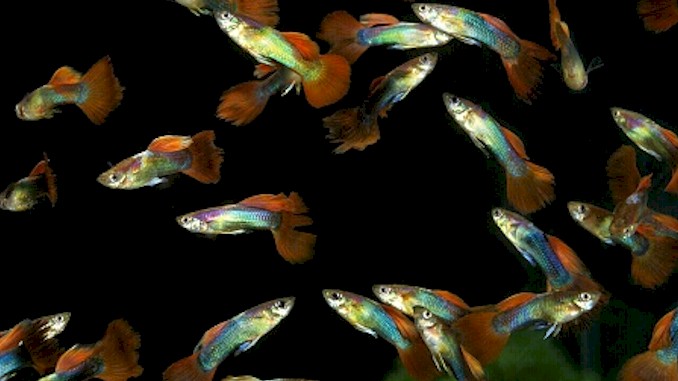Aquarium Plants Turning Black: All Reasons & Solutions
If you have an aquarium with live plants, you may have noticed that some of them are turning black. This can be a sign of various problems, such as algae growth, nutrient deficiency, poor water quality, or disease. But don’t worry, I’m here to help you figure out the causes and solutions for this common issue. In this blog post, I will explain all the possible reasons why your aquarium plants are turning black and how to fix them. By following my advice, you can restore the health and beauty of your aquatic plants and enjoy your aquarium more.
The most common causes Aquarium plants turning black are algae infestation, insufficient lighting, nutrient deficiency, poor water quality, and plant disease. Each of these factors can be prevented or treated by following proper aquarium maintenance and care practices.
In the following sections, I will go into more detail about each of the possible causes of aquarium plants turning black and how to solve them. I will also give you some tips on how to choose the best plants for your aquarium and how to keep them healthy and vibrant. By reading this blog post, you will learn everything you need to know about aquarium plants and how to prevent them from turning black in the future.
How to Identify and Remove Algae from Your Aquarium Plants
Algae are microscopic organisms that can grow on any surface in your aquarium, including your plants. Algae can be beneficial for your aquarium ecosystem, as they produce oxygen and provide food for some fish and invertebrates. However, too much algae can be a problem, as they can compete with your plants for nutrients and light, make your water cloudy, and ruin the appearance of your aquarium.
There are many types of algae that can affect your aquarium plants, but some of the most common ones are:
- Black Beard Algae: This is a type of red algae that grows in black or dark green tufts on plant leaves, driftwood, rocks, and equipment. It is very hard to remove manually and can damage your plants by blocking their photosynthesis.
- Blue-Green Algae: This is actually a type of bacteria that forms slimy green or blue-green mats on plant leaves, substrate, and glass. It can produce toxins that harm your fish and plants, and it can also cause foul odors.
- Hair Algae: This is a type of green algae that grows in long, thin strands on plant leaves, stems, and tips. It can entangle your plants and make them look messy.
- Green Spot Algae: This is a type of green algae that grows in small, hard spots on plant leaves, glass, and equipment. It can indicate low levels of phosphate or carbon dioxide in your water.
- Staghorn Algae: This is a type of red algae that grows in gray or white branching filaments on plant leaves, stems, and edges. It can be mistaken for hair algae or fungus.
- Spirogyra Algae: This is a type of green algae that grows in bright green filaments that spiral around each other. It can form dense mats that float on the water surface or cover your plants.
- Green Dust Algae: This is a type of green algae that grows in fine dust-like particles on glass, equipment, and decorations. It can make your aquarium look dirty and reduce visibility.
To identify the type of algae you have in your aquarium, you need to observe their color, shape, texture, location, and growth pattern. You can also use online resources or consult with experts to confirm your diagnosis.
Remove algae from your aquarium plants
To remove algae from your aquarium plants, you need to use a combination of mechanical, chemical, and biological methods. Here are some general steps you can follow:
Mechanical removal
Use a soft brush or toothbrush to gently scrub off the algae from your plant leaves. You can also use tweezers or scissors to trim off the affected parts of your plants. Be careful not to damage your plants or spread the algae spores to other areas.
Chemical removal
Use an algaecide product that is safe for your fish and plants to kill the remaining algae cells. Follow the instructions on the label carefully and do not overdose. You can also use hydrogen peroxide or bleach to spot-treat stubborn algae patches on your plants. However, these methods are risky and should be done with caution.
Biological removal
Add some algae-eating fish or invertebrates to your aquarium to help control the algae population. Some examples are Siamese algae eaters, otocinclus catfish, amano shrimp, nerite snails, and ramshorn snails. Make sure they are compatible with your other tank inhabitants and provide them with enough food and space.
Insufficient lighting as a reason for brown or black plants:
Light is essential for photosynthesis in plants, which is the process by which plants convert light energy into chemical energy that they can use to grow. Insufficient lighting can result in the death of plant tissue, leading to brown or black aquarium plants.
There are several factors that can contribute to insufficient lighting in an aquarium. Firstly, the type of light used can affect the intensity and quality of light that reaches the plants. Some types of light bulbs, such as incandescent bulbs, do not provide sufficient light for plants to thrive. It is recommended to use fluorescent or LED lights designed specifically for aquarium use, which provide the right spectrum of light for plant growth.
Another factor that can contribute to insufficient lighting is the distance between the light source and the plants. If the light is too far away from the plants, the intensity of light will be decreased, which can limit plant growth. On the other hand, if the light is too close, it can cause heat stress and damage to the plants.
The duration of lighting is also important. Plants require a certain amount of light each day to grow and thrive. It is recommended to provide at least 8-10 hours of light per day for most aquarium plants.
Lastly, algae growth can also contribute to insufficient lighting for aquarium plants. Algae can compete with plants for light and nutrients, leading to limited plant growth and brown or black leaves. Controlling algae growth through proper maintenance and water quality can help ensure that plants receive adequate light to grow and thrive.
How to Provide the Right Nutrients for Your Aquarium Plants
Aquarium plants need certain nutrients to grow healthy and beautiful in your tank. Nutrients are substances that plants use to perform various functions, such as photosynthesis, growth, reproduction, and defense. Without enough nutrients, plants can become weak, stunted, discolored, or even die.

There are two main categories of nutrients that aquarium plants need: macronutrients and micronutrients. Macronutrients are nutrients that plants need in large amounts, such as nitrogen, phosphorus, potassium, carbon, and oxygen. Micronutrients are nutrients that plants need in small amounts, such as iron, manganese, zinc, copper, boron, and molybdenum.
Some of the most important nutrients for aquarium plants are:
- Nitrogen: Nitrogen is essential for plant growth and protein synthesis. Plants use nitrogen to make amino acids, which are the building blocks of proteins. Nitrogen deficiency can cause yellowing or browning of older leaves.
- Phosphorus: Phosphorus is important for plant energy and metabolism. Plants use phosphorus to make ATP (adenosine triphosphate), which is the main source of energy for cellular processes. Phosphorus deficiency can cause dark green or purple coloration of older leaves.
- Potassium: Potassium is vital for plant water balance and enzyme activation. Plants use potassium to regulate the movement of water and nutrients across cell membranes. Potassium deficiency can cause yellowing or browning of leaf edges or tips.
- Carbon: Carbon is the backbone of organic molecules in plants. Plants use carbon to make carbohydrates, such as sugars and starches. Carbon is mainly supplied by carbon dioxide (CO2) in the water or air. Carbon deficiency can cause slow growth or stunted development.
- Iron: Iron is crucial for plant chlorophyll and respiration. Plants use iron to make chlorophyll, which is the pigment that gives plants their green color and enables them to capture light energy for photosynthesis. Iron deficiency can cause yellowing or whitening of young leaves.
- Magnesium: Magnesium is a component of chlorophyll and a cofactor for many enzymes. Plants use magnesium to help with photosynthesis and other biochemical reactions. Magnesium deficiency can cause yellowing or browning of older leaves with green veins.
The table below summarizes some of the common nutrients that aquarium plants need and their sources:
| Nutrient | Source |
|---|---|
| Nitrogen | Fish waste, decaying organic matter, fertilizers |
| Phosphorus | Fish food, decaying organic matter, fertilizers |
| Potassium | Tap water, fertilizers |
| Carbon | Carbon dioxide (CO2), bicarbonate (HCO3), organic acids |
| Iron | Tap water, fertilizers |
| Magnesium | Tap water |
To provide the right nutrients for your aquarium plants, you need to monitor your water parameters regularly and adjust them accordingly. You can use water test kits or strips to measure the levels of nitrogen (as nitrate), phosphorus (as phosphate), potassium (as potassium), iron (as iron), and other nutrients in your tank water.
If you suspect that your plants aren’t getting enough nutrients, I highly recommend checking the Seachem Flourish Tabs Growth Supplement (link to Amazon). All you have to do is scatter these tabs 4 to 6 inches from each other.
As a rule of thumb, you’ll require about six tabs for every 10 gallons of water. By adding those, you’ll elevate essential nutrients. That includes Nitrogen, Phosphate, Calcium, Magnesium, Iron, Manganese, etc.
The advantage of nutrient deficiencies is that they are relatively easy to solve. If you wish to treat each nutrient separately, you can use these test kits:
- Phosphorus levels: API PHOSPHATE TEST KIT (link to Amazon).
- Iron and pH levels: 17 in 1 Premium Drinking Water Test Kit (link to Amazon).
- Calcium and Magnesium: Red Sea Reef Foundation Test Kit (link to Amazon).
- Nitrogen: PK50 Test Stripes (link to Amazon).
You also need to supplement your plants with additional nutrients if they are lacking in your water source or consumed by your plants faster than they are replenished. You can use liquid fertilizers like Seachem Flourish Nitrogen (link to Amazon), or dry fertilizers that contain a balanced mix of macronutrients and micronutrients for your plants.
You should follow the instructions on the label carefully and dose according to your tank size and plant needs. You should also avoid over-fertilizing your plants as this can cause algae growth or nutrient toxicity.
Another way to provide the right nutrients for your aquarium plants is to choose suitable substrate materials that can store and release nutrients over time. Some examples are soil-based substrates (such as aquasoil), clay-based substrates (such as laterite), or gravel-based substrates with root tabs.
You should also consider adding CO2 injection systems to your tank if you have high-light or demanding plants that require more carbon than what is available naturally in your water or air. CO2 injection systems can enhance plant growth and color by providing a steady supply of carbon dioxide for photosynthesis.
However, you should be careful not to overdose CO2 as this can lower the pH of your water and harm your fish.
How to Maintain Optimal Water Quality for Your Aquarium Plants
Water quality is one of the most important factors that affect the health and growth of your aquarium plants. Poor water quality can cause stress, disease, algae, and plant death. Therefore, you need to maintain optimal water quality for your aquarium plants by following these steps:
Test your water parameters regularly
You should test your water parameters at least once a week or whenever you notice any changes in your tank. You should measure the levels of pH, ammonia, nitrite, nitrate, phosphate, hardness, and temperature. You can use water test kits or strips to do this easily and accurately.
Change your water frequently
You should change 25% to 50% of your water every week or every two weeks depending on your tank size and bioload. Water changes help remove excess nutrients, waste products, toxins, and pollutants from your tank. They also replenish minerals and oxygen that are essential for your plants.
Use a good filtration system
You should use a filter that can provide mechanical, biological, and chemical filtration for your tank. Mechanical filtration removes solid particles from the water, such as fish waste, food debris, and plant matter. Biological filtration converts harmful ammonia and nitrite into less harmful nitrate by beneficial bacteria. Chemical filtration removes dissolved substances from the water, such as chlorine, chloramine, metals, and organic compounds.
Add live plants to purify the water
Live plants can help improve the water quality of your tank by absorbing nutrients, releasing oxygen, providing shade, and creating a natural balance. Some of the best plants for purifying aquarium water are duckweed, amazon frogbit, waterweeds, guppy grass, hornwort, water lettuce, water sprite, and water hyacinth.
Avoid overfeeding your fish
Overfeeding your fish can lead to excess nutrients in the water that can cause algae growth and poor plant growth. You should feed your fish only what they can consume in a few minutes and remove any uneaten food from the tank.
Control algae growth
Algae can compete with your plants for light and nutrients and make your tank look unsightly. You should control algae growth by reducing the amount of light and nutrients in your tank. You can also use algae-eating fish or snails to help keep algae under control.
How to Diagnose and Treat Common Plant Diseases
Aquarium plants can be affected by various diseases that can harm their health and appearance. Some of the common plant diseases are:
Algae
Algae are microscopic organisms that can grow on the surface or inside of aquarium plants. They can cause discoloration, stunted growth, and reduced photosynthesis. Algae can be caused by excess light, nutrients, or organic matter in the water. To prevent algae, you should reduce the lighting duration and intensity, perform regular water changes, use a good filter, and add live plants or algae-eating fish or snails to your tank. To treat algae, you can manually remove them with a toothbrush or tweezers, use algaecides or hydrogen peroxide, or use ultraviolet sterilizers or ozone generators.
Fungus
Fungus are microscopic organisms that can infect aquarium plants and cause white, cottony growths on their leaves or stems. They can also cause rotting and decay of plant tissues. Fungus can be caused by poor water quality, low oxygen levels, high organic matter, or physical damage to the plants. To prevent fungus, you should maintain optimal water quality, increase aeration and circulation, remove dead or decaying plant matter, and avoid injuring your plants. To treat fungus, you can use antifungal medications or potassium permanganate.
Bacteria
Bacteria are microscopic organisms that can infect aquarium plants and cause yellowing, wilting, melting, or rotting of plant tissues. They can also spread to other plants or fish in your tank. Bacteria can be caused by poor water quality, low oxygen levels, high organic matter, or physical damage to the plants. To prevent bacteria, you should maintain optimal water quality, increase aeration and circulation, remove dead or decaying plant matter, and avoid injuring your plants. To treat bacteria, you can use antibacterial medications or potassium permanganate.
Parasites
Parasites are microscopic organisms that can attach to aquarium plants and feed on their sap or cells. They can cause holes, spots, lesions, or deformities on the plant leaves or stems. They can also weaken the plant’s immune system and make them more susceptible to other diseases. Parasites can be introduced by new plants or fish in your tank. To prevent parasites, you should quarantine new plants or fish for at least two weeks before adding them to your tank. You should also disinfect new plants with bleach solution (1 part bleach to 19 parts water) for 1 to 2 minutes before rinsing them thoroughly with dechlorinated water. To treat parasites, you can use antiparasitic medications or potassium permanganate.
How to Select and Care for the Best Aquarium Plants
Aquarium plants can enhance the beauty and health of your aquarium by providing natural filtration, oxygen, shelter, and food for your fish. However, not all plants are suitable for every aquarium. You need to consider factors such as the size, shape, lighting, substrate, water parameters, and compatibility of your tank before choosing the best plants for your aquarium. Here are some tips on how to select and care for the best aquarium plants:
Choose plants that match your tank conditions
Different plants have different requirements for light, temperature, pH, hardness, and nutrients. You should research the optimal conditions for each plant species before buying them. You should also avoid plants that are too large or too small for your tank size. For example, if you have a small tank, you should avoid plants that grow too tall or too wide and block the light or water flow. If you have a large tank, you should avoid plants that are too delicate or too slow-growing and get overshadowed by other plants or algae.
Choose plants that match your fish preferences
Some fish like to nibble on plants, some like to hide among them, and some like to swim around them. You should choose plants that suit your fish’s behavior and personality. For example, if you have herbivorous fish like goldfish or cichlids, you should avoid plants that are soft or tasty and opt for plants that are tough or bitter. If you have shy fish like tetras or rasboras, you should provide them with dense or bushy plants that offer them cover and security. If you have active fish like danios or barbs, you should provide them with open spaces and flowing plants that create movement and interest.
Choose plants that match your aesthetic preferences
Plants come in various shapes, colors, textures, and patterns. You should choose plants that appeal to your personal taste and style. You can create different themes or effects with different plant combinations. For example, if you want a natural-looking tank, you can choose plants that mimic the habitats of your fish such as Amazon sword, Java fern, or Anubias. If you want a colorful tank, you can choose plants that have red, purple, or variegated leaves such as Ludwigia, Alternanthera, or Cryptocoryne. If you want a minimalist tank, you can choose plants that have simple or elegant forms such as Java moss, Bucephalandra, or Marimo moss balls.
Care for your plants properly
Plants need proper care to thrive in your aquarium. You should provide them with adequate light, fertilizer, CO2 (carbon dioxide), pruning, and cleaning. You should also monitor them for signs of disease or pest infestation and treat them accordingly.
Light
Light is essential for photosynthesis which is how plants produce energy and oxygen. Different plants have different light needs ranging from low to high. You should use a suitable light source such as LED (light-emitting diode), fluorescent tube (T5/T8), metal halide (MH), compact fluorescent (CFL), etc., depending on your plant type and tank size. You should also adjust the light duration (photoperiod) according to your plant type and tank cycle. Generally speaking,
- Low-light plants need 6 to 8 hours of light per day
- Medium-light plants need 8 to 10 hours of light per day
- High-light plants need 10 to 12 hours of light per day
Fertilizer
Fertilizer provides essential nutrients such as nitrogen (N), phosphorus (P), potassium (K), iron (Fe), magnesium (Mg), etc., for plant growth and health. Different fertilizers have different formulations and dosages depending on your plant type and tank condition. You can use liquid fertilizers that are added directly to the water column or substrate fertilizers that are inserted into the gravel or sand bed. You should follow the instructions on the product label carefully and avoid over-fertilizing which can cause algae problems.
CO2
CO2 is another important factor for photosynthesis which is how plants absorb carbon from the water column. Different plants have different CO2 needs ranging from low to high. You can use natural sources of CO2 such as fish respiration or organic decomposition which produce small amounts of CO2 in your tank naturally. You can also use artificial sources of CO2 such as DIY (do-it-yourself) yeast bottles which produce CO2 by fermenting sugar and yeast or pressurized CO2 systems which inject CO2 into the tank using a regulator and a diffuser. You should monitor the CO2 level in your tank using a drop checker or a pH/kH chart and adjust it according to your plant type and tank condition. Generally speaking,
- Low-CO2 plants need 0 to 5 ppm (parts per million) of CO2
- Medium-CO2 plants need 5 to 15 ppm of CO2
- High-CO2 plants need 15 to 30 ppm of CO2
Pruning
Pruning is necessary to maintain the shape and size of your plants and to remove any dead or damaged leaves or stems. You should use sharp scissors or tweezers to cut off any unwanted or unhealthy parts of your plants. You should also trim any overgrown or invasive plants that are blocking the light or water flow or competing with other plants for space or nutrients. You should prune your plants regularly depending on their growth rate and your desired look.
Cleaning
Cleaning is essential to keep your plants free from algae, debris, snails, or other pests that can harm them or reduce their appearance. You should use a soft brush, sponge, or cloth to gently wipe off any algae or dirt from your plant leaves or stems. You should also use a gravel vacuum or siphon to remove any waste or excess food from your substrate. You should also check your plants for any signs of disease or pest infestation such as holes, spots, discoloration, curling, melting, etc., and treat them accordingly with appropriate medications or remedies.

